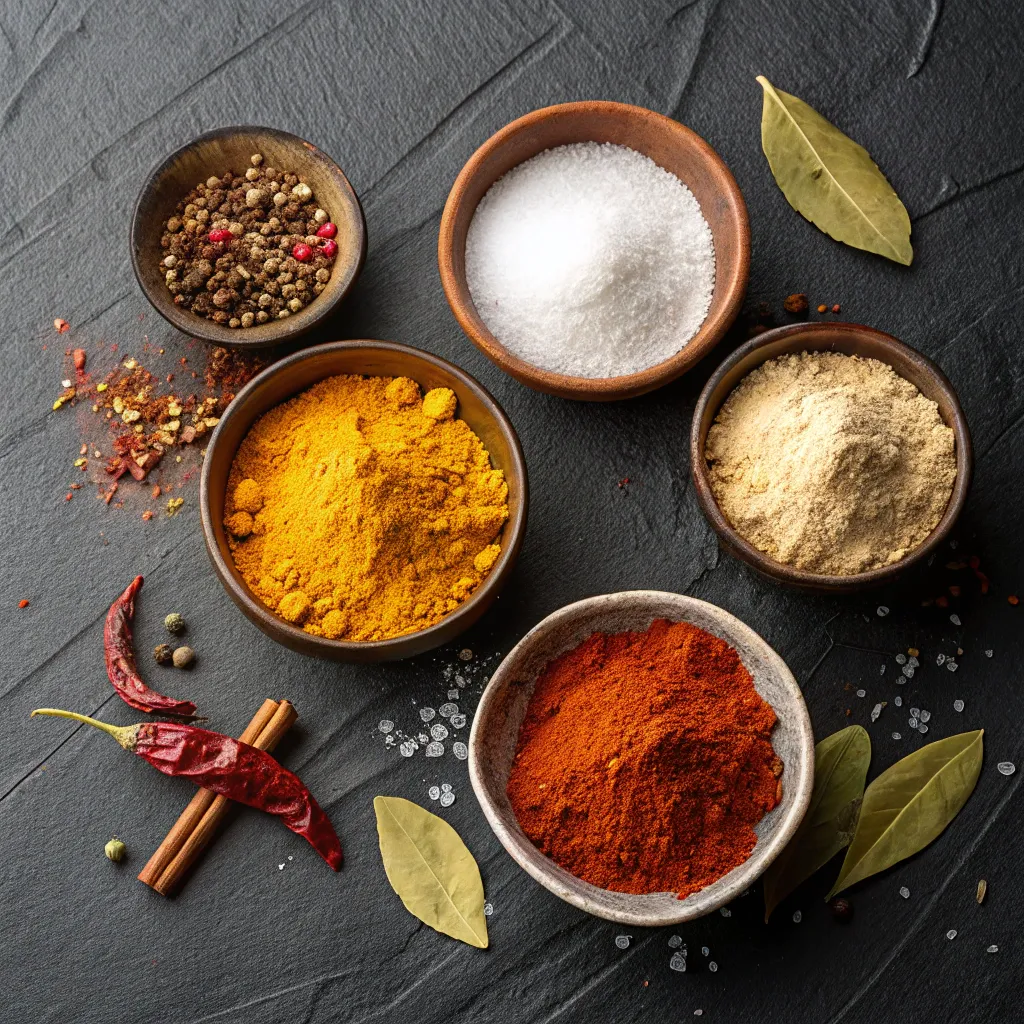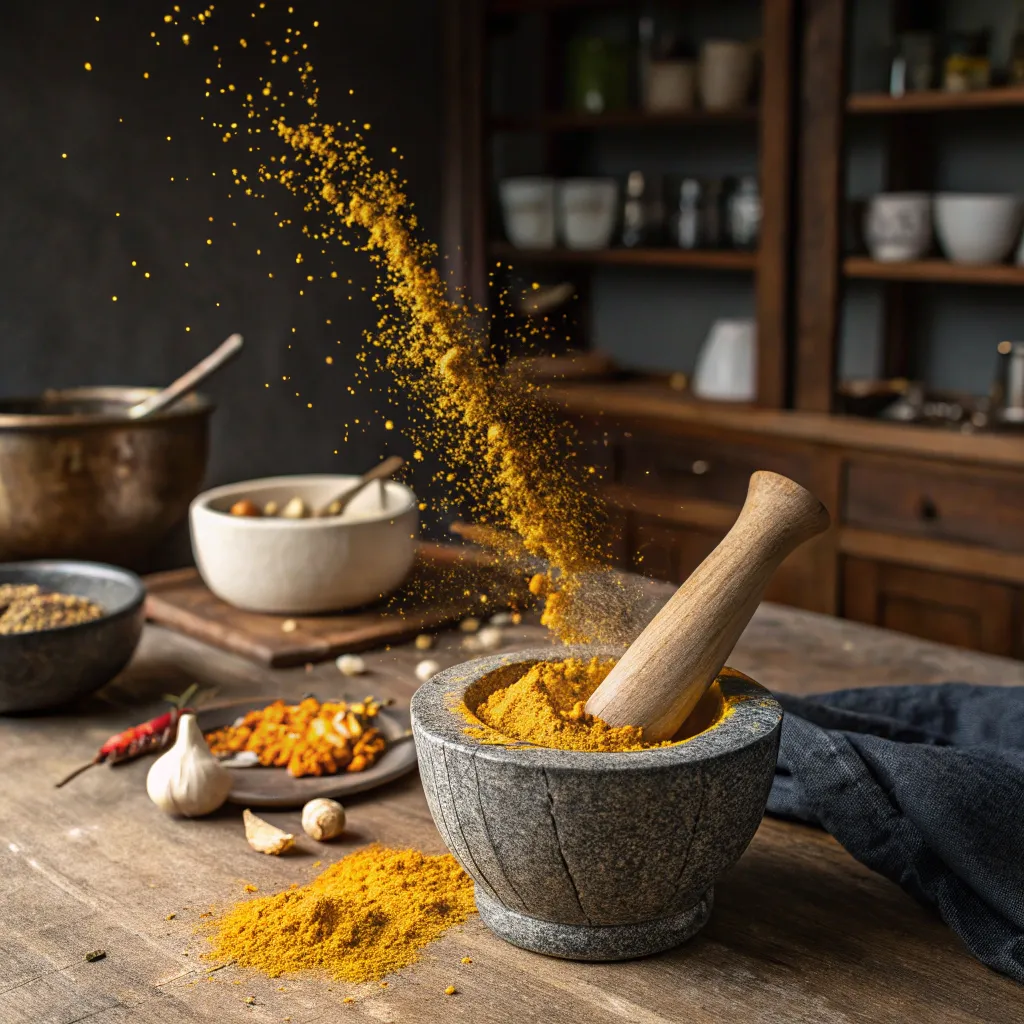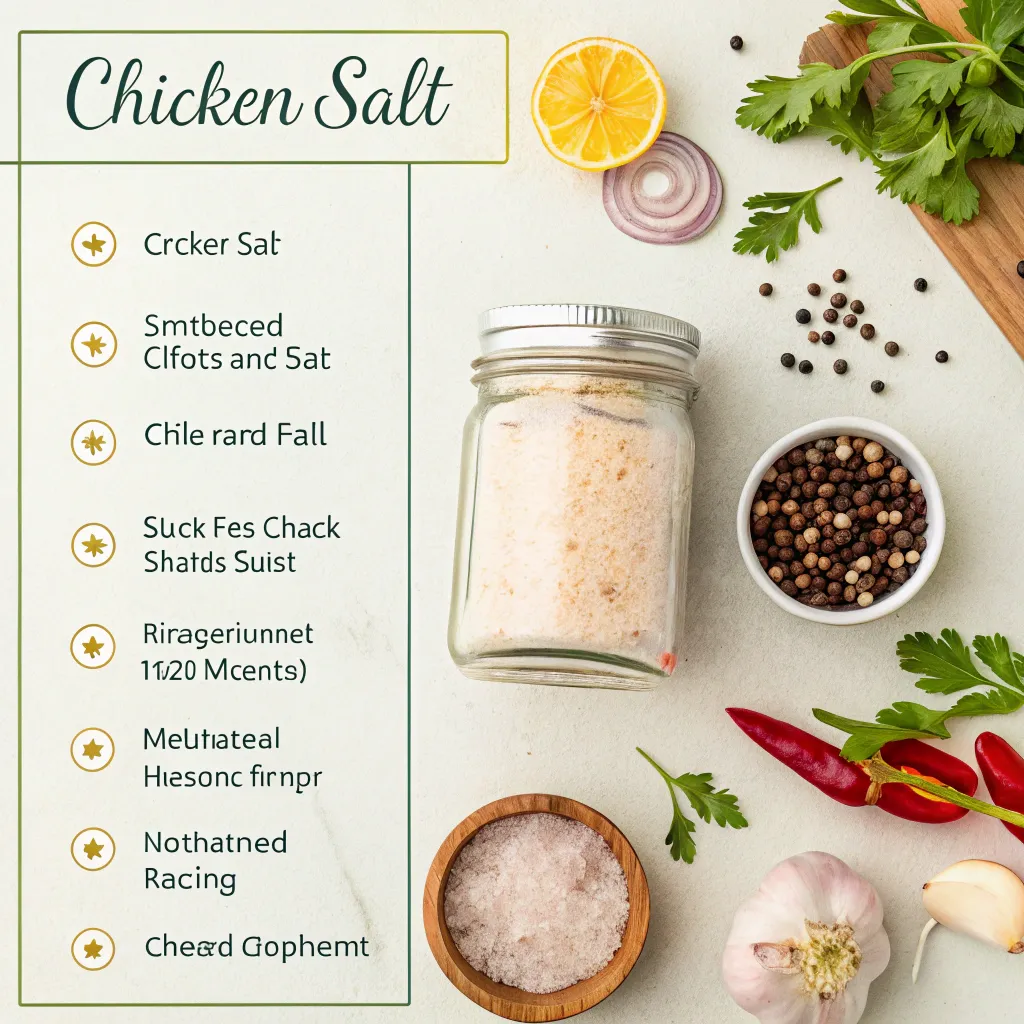I never expected to fall in love with a yellow seasoning from halfway across the world. As a Provençal chef raised on olive oil, rosemary, and the poetry of simple ingredients, discovering chicken salt in an Adelaide takeaway shop was as surprising as it was unforgettable. What began as a sprinkle on fries turned into an obsession—and soon, this Aussie staple found a home on my spice rack between Herbes de Provence and piment d’Espelette.
In this article, I’ll share the origins of chicken salt, what makes it unique, and how it’s quietly revolutionizing kitchens far beyond Australia. Whether you’re a home cook or a seasoned chef, this golden blend might just become your next go-to flavor enhancer.
The Story Behind Chicken Salt & Why It Belongs in Every Kitchen
A Provençal Chef Meets an Aussie Favorite
I still remember the first time I tasted chicken salt. It wasn’t in a quaint bistro in France or on the market street of Avignon—it was in Adelaide, Australia, of all places. I was visiting my cousin during her student exchange year, and she dragged me to a local takeaway shop. There, sitting beside a modest paper tray of fries, was a small shaker filled with this mysterious yellow powder. I sprinkled it out of curiosity—and I was hooked.
That salty, savory, slightly herby burst took me by surprise. It was like bouillon met barbecue with just a hint of sunshine. I brought a jar home, tucked it between my Herbes de Provence and piment d’Espelette. And before long, I was dusting it over roast potatoes, scrambled eggs, even popcorn.
You see, in Provence, we respect simplicity. We cook with fresh ingredients, we let flavors speak, and we rarely reach for shortcuts. But chicken salt? That was a shortcut with soul. A seasoning that doesn’t just add salt—it adds depth, character, and nostalgia. And that’s why I believe every home cook should have a jar of it within reach.
What Exactly Is Chicken Salt?
Despite the name, most modern chicken salts contain no chicken at all. Originally created in Australia in the 1970s as a flavoring for rotisserie chickens, it was a mix of salt, herbs, spices, onion powder, and yes—dehydrated chicken. But today’s chicken salt is often plant-based, making it a versatile addition for vegetarians and meat-lovers alike.
Here’s what you’ll typically find in chicken salt:
- Sea salt
- Onion powder
- Garlic powder
- Paprika
- Celery seed
- Turmeric (for that iconic yellow hue)
- Sometimes sugar or MSG for flavor enhancement
What sets it apart from regular seasoning salt is its rich umami profile. It’s not just salty—it’s savory, herby, and warm.
One of the most delightful guides I found on this was right here on Giddy Recipes—a breakdown of its history and uses that truly honors its flavorful legacy.
To get creative with how you use chicken salt, check out the cheesy garlic chicken wraps recipe, which gets an umami boost with just a pinch of it.
Why Chicken Salt is a Game-Changer in Your Everyday Cooking
What Goes Into Chicken Salt?

You might assume chicken salt is just flavored sodium, but the ingredient list tells a more interesting story. While variations exist depending on the brand or homemade recipe, a typical chicken salt blend includes a flavorful combination of:
- Salt: The base. Sea salt or table salt gives it that essential punch.
- Onion and garlic powder: These bring out deep savory notes, perfect for mimicking roasted meats.
- Paprika: Adds subtle warmth and a touch of sweetness.
- Celery seed or powder: Offers a herbal, slightly bitter undertone that balances richness.
- Turmeric: Gives chicken salt its sunny yellow color and a mild earthy flavor.
- Sugar (optional): Softens the edges with a hint of sweetness.
- MSG or yeast extract (in some versions): Boosts that umami intensity.
A few brands sneak in actual chicken extract or flavoring, but many don’t, making it vegan-friendly. If you want full control, you can make your own version at home. Simply toast the dry ingredients lightly in a pan to release their aromas before grinding them to a powder.
Want a playful, creative use for your chicken salt? Try it as a final seasoning in this burger meat and bean crockpot recipe. It gives a slow-cooked richness without waiting hours.
Where Chicken Salt Shines in the Kitchen
Chicken salt isn’t just for fries—though, let’s be honest, that’s where most people fall in love with it. Think of it as your all-purpose umami weapon. A little goes a long way, and it enhances without overpowering.
Here are some places where I like to use it:
- Roasted vegetables: Sprinkle it on before or after roasting carrots, potatoes, or Brussels sprouts.
- Eggs: A pinch on scrambled eggs or an omelet brings unexpected depth.
- Popcorn: For a quick savory snack, drizzle a little olive oil and dust with chicken salt.
- Soups and broths: Stir into your next pot of lentil or chicken soup for a shortcut to comfort.
- Avocado toast: Forget plain salt—chicken salt makes it feel gourmet. Try it with this everything bagel avocado toast variation for the ultimate upgrade.
And don’t forget your homemade snacks. One of my favorite discoveries was using it in potato chips and salsa. Just a sprinkle over warm chips right out of the oven—it’s magic.
From quick bites to slow-cooked stews, this versatile seasoning has earned its place in both fast-paced kitchens and slow Sunday dinners.
The Origins of Chicken Salt: From Takeaway Counter to Global Craze
Where Did Chicken Salt Come From?

Chicken salt may be new to your spice rack, but in Australia, it’s practically a national treasure. The story begins in the 1970s in South Australia, where a man named Peter Brinkworth developed the seasoning as a flavor booster for his rotisserie chicken business. His original blend contained real chicken bouillon, turmeric, garlic, onion powder, and salt—all designed to deepen the flavor of cooked poultry.
But it didn’t stay on chicken for long.
Australian takeaway shops—known affectionately as “chippies”—started sprinkling it over hot chips (that’s Aussie for French fries). It stuck. The bright yellow seasoning became synonymous with salty-sweet crispy fries, turning a basic snack into a crave-worthy experience.
Today, chicken salt’s reach goes far beyond the land Down Under. While it remains a staple in Australian kitchens and fast food counters, it’s now found in American spice blends, UK pubs, and increasingly in gourmet pantries around the world.
For a fun nod to its Aussie roots, I recommend pairing it with something crispy like these taco cupcakes—the sweet-spicy filling contrasts perfectly with the savory top layer of chicken salt.
Which Countries Use Chicken Salt Today?
While Australia is still the capital of chicken salt fandom, the trend has spread:
- United States: Specialty spice shops, health food stores, and online retailers now carry both traditional and vegan versions. It’s popular with foodies looking to elevate snack foods.
- United Kingdom: British pubs and takeaway chains have begun adopting chicken salt, especially in urban centers with global food influences.
- New Zealand: As a neighbor to Australia, Kiwis were quick to adopt the trend, and many shops offer it as a standard seasoning.
- France (where I’m from): While it’s far from mainstream here, curious chefs like myself are starting to explore it as a twist on traditional French fare. A pinch in a velouté sauce? Unexpected but delicious.
Even in my own Provençal kitchen, I’ve used it to elevate simple fare. One of my favorite combinations is chicken salt over roasted tomatoes and goat cheese on a crusty baguette—a snack that bridges continents.
For anyone exploring flavor fusions, this captain d’s seafood-inspired menu offers the perfect opportunity to play with chicken salt as a crust for fried seafood or a topper for creamy slaw.
How to Use Chicken Salt Like a Pro: Tips, Tricks, and Everyday Recipes
Creative Ways to Use Chicken Salt at Home

If you think chicken salt is just a fry-topper, think again. The real magic of this seasoning is how flexible and flavor-packed it is across everyday meals. Here are a few of my favorite, tried-and-true ways to sneak in its golden goodness:
1. Marinades
Mix chicken salt into a marinade with olive oil, lemon juice, and chopped herbs. It adds instant depth to chicken thighs, tofu, or grilled veggies.
2. Stirred into Soups or Sauces
Think of chicken salt as a concentrated bouillon. Stir a spoonful into your soup, gravy, or even risotto for an immediate umami boost without needing stock.
3. Pasta Topping
Sprinkle over buttered noodles or creamy Alfredo for a subtle, savory twist—especially lovely with this steak alfredo guide.
4. Roasted Nuts or Popcorn
Toss warm cashews or air-popped popcorn in a bit of oil and chicken salt for a snack that vanishes fast.
5. Breakfast Hero
Add it to hash browns or even sprinkle over an egg sandwich. It’s a savory upgrade you didn’t know you needed.
Even something like a protein matcha latte gets a surprising edge with just a tiny pinch—think of it as a grown-up version of salted caramel, minus the sugar.
Tips to Balance Its Bold Flavor
Chicken salt is punchy, so moderation is key. Here’s how to get it right:
- Start small—½ teaspoon per serving goes a long way.
- Taste as you go, especially if the dish already includes broth or soy sauce.
- Use it to finish a dish, not just cook it—much like fleur de sel in French cuisine.
Need a perfect cozy meal to practice with? Try the creamy warmth of chicken corn soup and swap traditional salt for this golden blend—you’ll be amazed at the difference.
FAQ: Chicken Salt Essentials
De quoi est fait le sel de poulet ?
Chicken salt is typically made from sea salt, onion powder, garlic powder, paprika, turmeric, celery seed, and sometimes sugar or MSG. Modern blends are often vegan, despite the name.
Quels pays ont du sel de poulet ?
Australia is the origin and stronghold, but chicken salt is now enjoyed in the US, UK, New Zealand, and other food-forward countries that explore global flavors.
Où utiliser le sel de poulet ?
You can use it on fries, roasted vegetables, popcorn, eggs, soups, and even in marinades or salad dressings. It’s an all-purpose umami enhancer.
D’où vient le sel de poulet ?
Chicken salt originated in South Australia in the 1970s, created by a chicken shop owner as a seasoning for rotisserie chickens. It later gained fame as a chip seasoning.
Conclusion: A Pinch of Comfort, A World of Flavor
Chicken salt is more than a curious condiment—it’s a shortcut to deliciousness, a spark of creativity in everyday cooking. From its Aussie roots to kitchens like mine in Provence, it continues to surprise and delight. Whether you’re dusting it on homemade fries or stirring it into your grandmother’s stew, this golden seasoning deserves a place next to your pepper grinder.
Cooking doesn’t have to be complicated. Sometimes all it takes is a sprinkle of something unexpected to transform a dish. So go ahead—open the jar, take a taste, and let your kitchen adventures begin.

